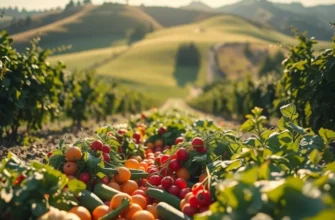Basting is a technique that adds flavor and moisture to meats while cooking, ensuring they remain juicy and delicious. Whether you’re roasting a chicken, grilling pork chops, or slow-cooking a brisket, learning how to baste can significantly improve your results. This guide will help you understand the why and how of basting, from choosing the right baste to mastering the technique, enhancing your culinary skills along the way.
Understanding the Basics of Basting

Basting is a culinary technique often used to enhance the flavor and juiciness of meat dishes. By periodically pouring or brushing liquid over the meat during cooking, it ensures the surface remains moist and flavorful. This technique not only adds depth of flavor but also helps in achieving an even cooking result.
Benefits of Basting
The primary benefit of basting is moisture retention. As meat cooks, especially over dry heat or in an oven, it tends to lose moisture. Basting counteracts this by providing an external layer of liquid, which helps prevent drying out. Additionally, basting contributes to creating a flavorful crust as the liquid caramelizes on the meat’s surface. This enhances both the visual appeal and taste profile of your dish.
Types of Baste
Basting can be performed using various liquids, each bringing a unique flavor dimension to your dish:
- Fat: Butter, oil, or rendered animal fats like lard provide a rich, savory base. They excel at enhancing poultry or red meats, creating a glossy finish and enhancing succulence.
- Broth: A broth or stock is ideal for adding depth without overwhelming the natural flavor of the meat. It’s especially useful when preparing lean meats like chicken or turkey.
- Marinades: These are typically infused with herbs, spices, or acids like vinegar and citrus. They introduce a complex flavor while also tenderizing the meat due to their acidic components.
Methods of Basting
Basting methods vary depending on the chosen liquid and the desired outcome.
- Spoon Basting: This involves using a spoon to ladle the liquid over the cooking meat, ensuring even coverage. It’s straightforward and effective for smaller cuts.
- Brush Basting: Ideal for thicker liquids like marinades, a basting brush can evenly coat the meat’s surface. This method is perfect for grilling or oven roasting.
- Drip Basting: Using the meat’s own juices that collect at the bottom of the pan, this method automatically bastes from below. It’s simple and reduces waste, aligning well with sustainable cooking practices.
Regardless of the method chosen, the key to effective basting is timing. Basting too frequently may reduce the oven’s temperature and extend cooking time, while infrequent basting might not yield the desired moisture retention. Aim to baste every 20 to 30 minutes for optimal results, allowing the liquid to adhere and enhance the flavor throughout the cooking process.
Mastering the art of basting can transform your culinary creations, infusing them with layered flavors and unparalleled juiciness. Experiment with different liquids and methods to discover the combinations that best suit your palate and produce the most delicious results.
Basting Techniques for Perfectly Moist Meat

Achieving perfectly moist meat through basting is an art form that every home cook can master. Whether roasting, grilling, or baking, basting can enhance textures and flavors. Let’s dive into various techniques and the precise tools you’ll need to bring out the best in your meat dishes.
Basting, quite simply, involves applying a layer of liquid to the surface of meat during cooking. This not only keeps the meat moist but also infuses it with flavor. Begin by selecting your basting liquid—it can be pan drippings, melted butter, stock, or marinades rich in aromatics. Consider easy sauce simmering to create a basting liquid full of depth and character.
Timing is crucial. Start basting once your meat has formed a crust. This allows the liquid to cling and soak in without washing away initial seasoning. For most meats, begin basting halfway through the cooking process and continue every 20 to 30 minutes. Poultry, with its dryer tendency, can benefit from more frequent basting.
When it comes to tools, the right choice makes a difference. A classic basting brush, made of silicone or natural bristles, offers flexibility and control. Alternatively, a spoon works wonders for drizzling pan drippings over a roast. For high-heat grill environments, a basting mop spreads liquid liberally over larger cuts.
Let’s break down basting techniques by meat type:
For poultry, such as turkey or chicken, leverage the depth of oven-roasting. Prepare a basting liquid with melted butter and herbs. During the last half of cooking, brush it generously every 15 minutes. This technique adds to the golden skin and juicy interior.
When grilling beef, such as steaks or brisket, a marinade-based technique works well. After searing, apply a mixture of oil, vinegar, and spices, increasing flavor as the meat finishes cooking over indirect heat.
Port cuts like loin roast benefit from drier basting techniques. Use a wine reduction or brown sugar glaze, brushing it on as the roast nears completion. This creates a beautifully caramelized layer, enhancing the natural flavors.
Fish is delicate, requiring subtle basting. Use melted butter, adding a touch of lemon juice or white wine. Apply gently to avoid breaking apart, particularly on the grill.
Here are a few insider tips for optimal basting results:
- Avoid opening the oven or grill excessively. Each time, heat escapes, extending cooking time.
- Use a clear container to keep your basting liquid warm near the cooking station. Cold liquid can disrupt cooking progress.
- For added flavor, consider infusing your basting liquid with garlic, herbs such as thyme, or zests of citrus.
With these techniques and tips, your meat dishes will turn out perfectly moist and flavorful, impressing your dining companions with every bite. Remember that practice makes perfect, so keep refining your basting skills until they’re at their peak.
Final words
Basting enhances the flavor and juiciness of your meats, making it a valuable technique in your cooking repertoire. By understanding the various baste options and mastering different basting methods, you can significantly improve your home-cooked meals. Practice these techniques regularly, and you’ll soon notice the difference in the tenderness and taste of your meats. Remember, cooking is a skill that evolves with practice, and basting is one of the simplest ways to elevate your dishes.







